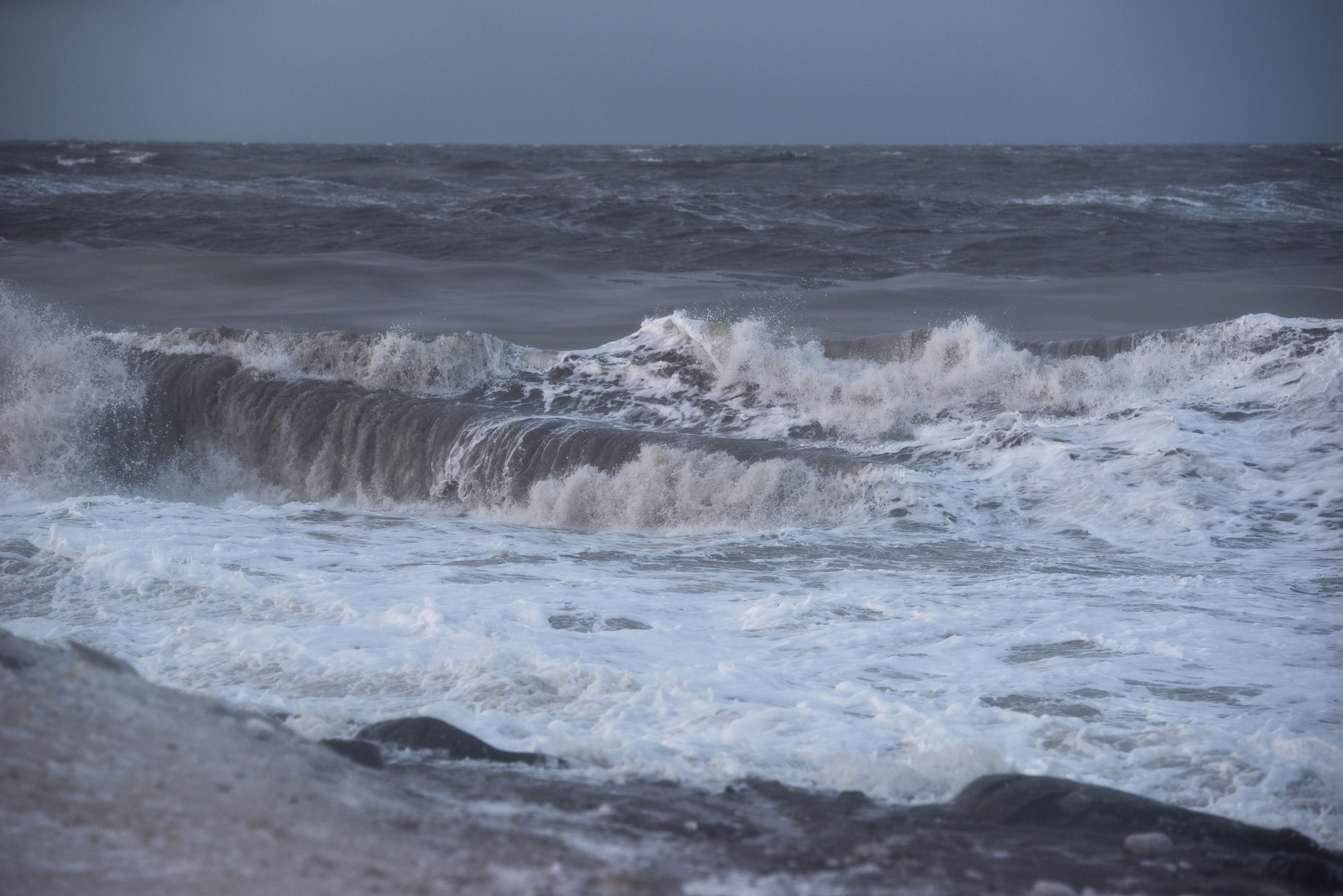Fall storms now regularly batter Alaska’s Arctic coastal villages — but don’t always qualify for disaster funds

A fall storm that sent waves crashing ashore in the northernmost U.S. community and caused at least $10 million in damage to roads, buildings and other facilities is part of a troublesome pattern in a new type of fall season along the coasts of northern and western Alaska. But current federal rules often mean such damage can’t be covered by disaster funds.
The storm that hit Utqiagvik in late September — the same time the southeastern U.S. states and Caribbean were lashed by hurricanes — flooded town sites, damaged more than three miles of protective beach berm, washed away a large section of guardrail and completely destroyed an important road that links the town to an important food-harvesting site, according to the North Slope Borough. It inundated two lagoons with saltwater, causing concerns for the adjacent freshwater source, and undercut a large section of bluff, causing it to start to collapse, the borough’s report said.
In the era of low sea ice and accentuated Arctic warming, such storms have become near-annual events, and part of a climate feedback loop. Vast expanses of open ocean water are sending heat into the atmosphere and helping whip up fall storms. Without surface ice to act as a buffer in the sea, storms are able to send surges of floodwater onshore. Without a solid freeze — in areas where permafrost thaw has softened the ground — coastlines hit by the storm waves are easily eroded away. And autumn, especially the month of October, is the period when the climate has warmed the most, weather records show.
Since 2004, there have been six federal major-disaster declarations for fall or early winter storms along Alaska’s Arctic or western coastlines, with compensation for damages totaling about $65 million, according to the Federal Emergency Management Agency. Four of those events have happened since 2011.
But some fall and early winter flood and erosion problems fail to qualify for federal disaster aid. To secure such aid, damages must be from a single and specific event, not a chronic condition that occurs over a longer period of time, said Sally Russell Cox, a planner with the Alaska Division of Community and Regional Affairs. Those requirements are spelled out in the federal Stafford Act, a law that is unlikely to be changed, said Cox, who gave updates on this year’s Arctic flooding at a meeting of the U.S. Arctic Research Commission earlier this month. The single-event requirement leaves many local communities out of luck when they are seeking federal disaster aid for what have become chronic fall storm surges, flooding and erosion, she said.
“It’s really difficult to do that with erosion and permafrost degradation because they’re slow-moving processes,” said Cox, one of the state officials working with climate-impacted coastal villages.
A disaster-declaration request for erosion and permafrost thaw in the Yupik village of Newtok, for example, was rejected in January by the Obama administration, even though President Obama, in his historic 2015 trip to Alaska and had promised aid to communities affected by coastal erosion and permafrost thaw. The problem with Newtok’s request, the rejection notice said, was that the damage “was not associated with a specific and identifiable incident or incident period,” and thus did not meet the Stafford Act’s requirements.
By mid-October, the North Slope Borough had not made any request for a disaster declaration for the September storm and associated floods, borough spokesman David Fauske said.
With fall storms becoming so common, sending storm surges over dramatically eroding coastlines, communities like Utqiagvik might have to make some long-term changes, Cox said.
“Are structures safe where they are right now, or are they going to have to move away from the coastline?” she said.
Among the questions: What will happen to an earthen storm berm that local officials have built on the Utqiagvik beach but have to frequently rebuild?
To local resident Andrew Kroll, whose house was almost lost in a 2015 storm and was again threatened by the September storm, the earthen berm is only a reactive and short-term approach. His house — considered safe when it was built in the 1970s, a time when fall sea ice was much more plentiful — is now on the front line of the Arctic fall storm battleground, he said. He is advocating for a new, collectively created system to protect the area.
“No resident’s going to have the resources by themselves to bring something to bear to fight the power of something of that magnitude and strength,” he said.
The 2015 storm and Kroll’s experience with it was documented in a special television series that followed the Utqiagvik high school football team.